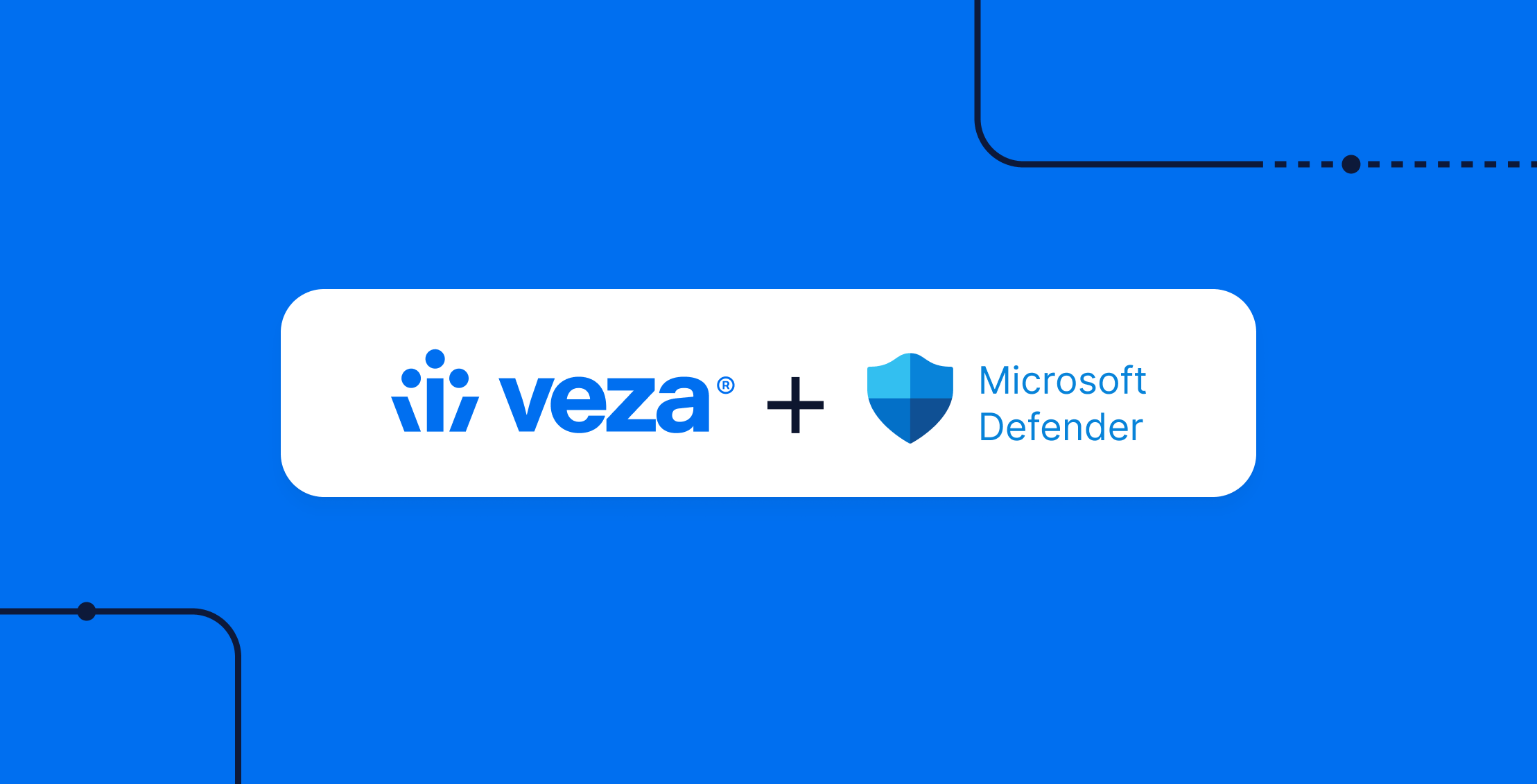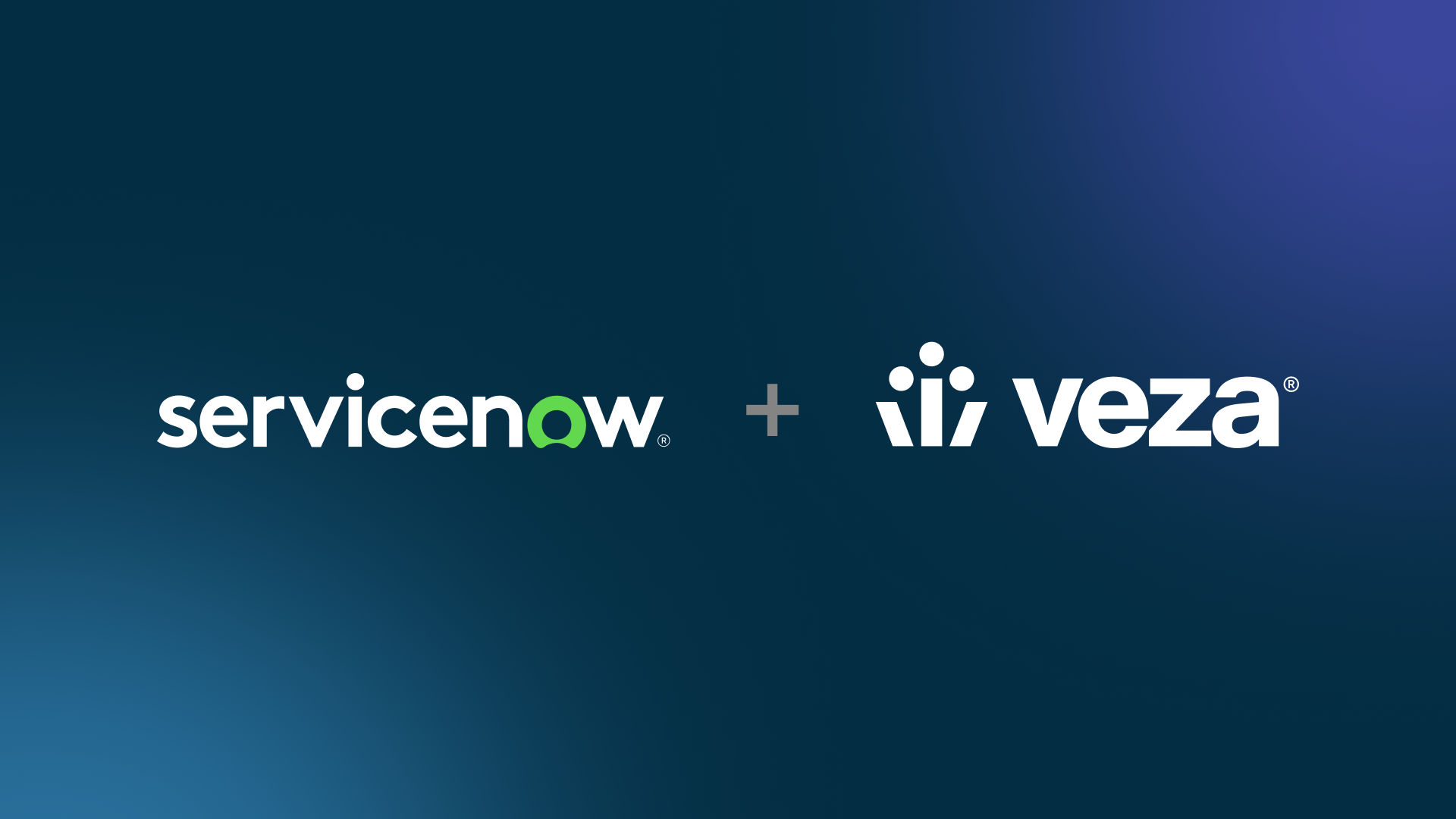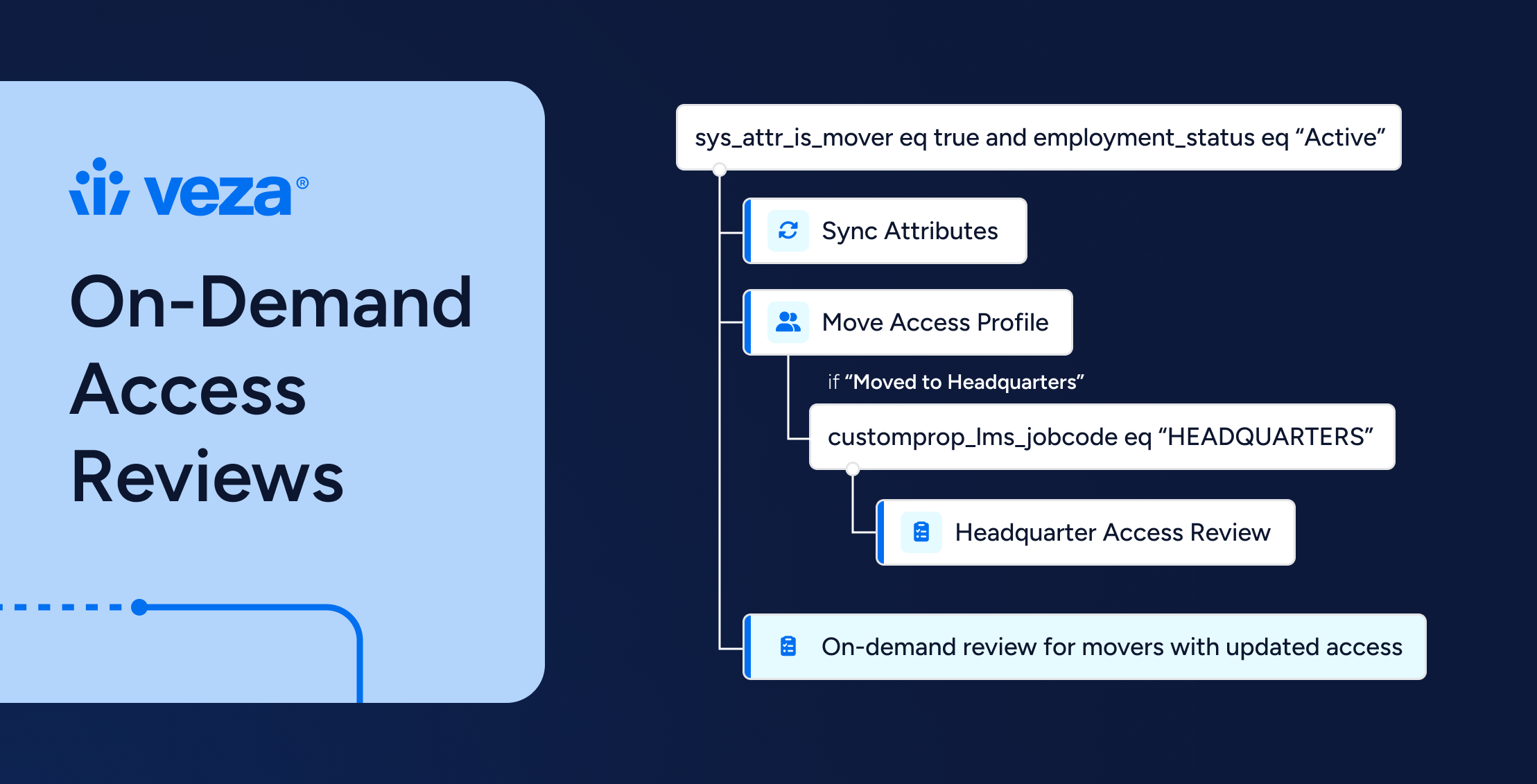
Service accounts are everywhere—and often invisible. Whether running backend services, managing inter-app communications, or handling automation scripts, these accounts are granted elevated privileges but lack basic security hygiene like MFA. That makes them low-hanging fruit for attackers and a compliance landmine.
This guide walks you through how to detect and reduce service account risk by combining Veza’s access intelligence with Microsoft Defender for Identity’s behavioural analytics—a practical, hands-on integration for security and identity pros.
Why Service Accounts Are a Security Risk
Service accounts are vital for automation in IT operations, but they pose a unique security challenge. These accounts often have elevated privileges and may not be protected by the same security measures as regular user accounts, such as Multi-Factor Authentication (MFA). Without proper oversight, service accounts can become vulnerable entry points for attackers, risking exposure of sensitive data. Securing these accounts is not just an operational concern, but a compliance necessity, particularly as organizations work toward meeting regulatory standards like PCI DSS 4.0.1. The PCI DSS 4.0.1 standard mandates strong controls for user access and account security, including Requirement 7 (Access Control), Requirement 8 (Identification and Authentication), and Requirement 10 (Logging and Monitoring).
Key Risks:
- Elevated Privileges: Service accounts typically have access levels far beyond regular users, often violating PCI DSS Requirement 7.1 (Access Control Policy) and Requirement 7.2 (Access Control Reviews).
- No MFA: Most service accounts don’t use MFA, making them susceptible to credential theft, in violation of Requirement 8.3 (Multi-Factor Authentication).
- Non-Human Identity: As accounts tied to applications, they often evade traditional detection methods, leaving gaps in compliance with Requirement 10.6 (Audit Trails) and Requirement 10.7 (Response and Monitoring).
These risks can lead to privilege escalation, lateral movement, and even full network compromise if not properly secured, putting PCI DSS compliance and overall system integrity at serious risk.
How Microsoft Defender for Identity (MDI) Addresses the Risk
MDI excels in monitoring service accounts by leveraging behavioural analytics to detect anomalies. It spots suspicious activities like unusual logins or unauthorized access, acting as an early warning system for potential attacks.
Key Features for Service Account Security:
- Behavioural Analytics: Detects abnormal activities like logins from unexpected locations or misuse of credentials.
- Risk Classification: Prioritizes service accounts based on criticality, helping you focus on the most important ones.
- Compromised Identity Detection: Flags service accounts used for privilege escalation or lateral movement, identifying potential insider threats.
How to Use MDI for Service Account Risk Detection:
For organizations with on-premises Active Directory, Microsoft Defender for Identity (MDI) provides robust monitoring and detection capabilities for service account threats. Here’s how to operationalize it:
- Enable MDI sensors on your domain controllers to ingest telemetry and detect anomalies.
- Create custom detections for risky behaviours, such as interactive logins by service accounts, or access from unusual geographies or unmanaged devices
- Use “Entity Tags” in MDI to flag high-privilege or sensitive service accounts, enabling prioritized risk reviews.
MDI offers continuous behavioural monitoring that flags suspicious activities, enabling a swift response to potential threats within your AD environment.
What About Cloud-First or Hybrid Identity?
For organizations using Microsoft Entra ID (formerly Azure AD) or operating in hybrid mode, similar visibility can be achieved through:
- Microsoft Entra ID Protection for detecting anomalous sign-ins and compromised credentials.
- Entra ID Governance for managing access lifecycle, entitlements, and privileged roles for non-human identities.
Veza complements both environments by offering cross-platform visibility and governance, ensuring least-privilege enforcement and access reviews across on-prem AD, Entra ID, SaaS, and cloud infrastructure.
No matter where you are in the identity modernization journey – legacy AD, Entra ID, or a hybrid of both – pairing Microsoft’s detection tools with Veza’s access governance gives you the visibility and control needed to manage service account risk at scale.
Human or non-human, on-prem or in the cloud – if it has access, it needs oversight.
How Veza Complements MDI: Access Visibility + Identity Security
MDI excels at detecting suspicious behaviour. Veza picks up where detection ends by enabling organizations to understand and control what service accounts can do. While traditional identity governance has focused on workflows and certification checkboxes, Veza delivers near real-time visibility and control, enforcing least-privilege access across human and non-human identities alike
Access Intelligence (Governance):
- Access Mapping: Visualizes exactly where service accounts have access, down to the resource level, across apps, infrastructure, and data systems. This detailed view exposes excessive or risky entitlements that traditional IAM tools often miss.
- Automated Entitlement Reviews: Conducts regular reviews to identify and remediate over-privileged accounts.
Identity Security Enforcement (Security):
- Least-Privilege Enforcement: Ensures service accounts only have the minimum necessary access, reducing the attack surface.
- Misconfiguration Detection: Identifies service accounts with risky privilege combinations (e.g., write access to production data + automation rights).
Veza goes beyond traditional governance by treating access as a security control, not just a compliance checkbox. When paired with MDI’s behavioural analytics, you gain a dual-lens approach: who’s doing what and what they’re allowed to do, so you can spot risk before it becomes compromised.
How to Operationalize Access Governance with Veza:
Visibility is step one, but action is what closes the loop. Once you’ve surfaced risky service account behaviour with Microsoft Defender for Identity, Veza turns insight into impact. By combining access intelligence with Veza Actions, you can automate the response, whether it’s launching a review, revoking access, or escalating to SecOps.
Here’s how to go from “we found something” to “we fixed it” in minutes:
- Ingest Identity Data: Bring in AD groups, service account metadata, and permissions across your environment—on-prem, cloud, SaaS. Veza builds a unified, near real-time map of who (or what) has access to what.
- Run an Access Map Report: Identify high-privilege service accounts and visualize exactly what they can access across systems—databases, infrastructure, SaaS, and more. Spot privilege creep and risky combinations.Correlate with Risk Signals: Connect with Microsoft Defender for Identity (MDI) to flag suspicious behaviour. When MDI detects a potentially compromised account, Veza shows the blast radius and what that account can do.
- Take Action with Veza: Use Veza Actions to trigger automated entitlement reviews, revoke risky access, or escalate through ITSM tools like ServiceNow. No swivel-chairing between tools—just policy-to-action in one flow.
Where MDI detects risky behaviours, Veza takes it further, enabling automated, policy-driven actions to validate and remediate access in real time. It’s not just detection and visibility; it’s active enforcement of least privilege at scale. Learn how to operationalize this in practice.
Together, they create a continuous feedback loop – connecting detection with control. Here’s how that plays out in the field.
How MDI and Veza Work Together
When combined, MDI and Veza provide a comprehensive service account security solution, integrating detection and prevention into one unified system.
How They Complement Each Other:
- Discovery and Enrichment: MDI detects risky behaviours while Veza maps out access, giving you a clearer picture of the potential impact of suspicious activities.
- Cross-Platform Visibility: MDI flags abnormal activity, but Veza ensures you have visibility into where service accounts have access across systems, apps, and cloud environments.
- Risk-Based Access Reviews: If MDI detects unusual behaviour, Veza can trigger an automatic review of access permissions, ensuring compliance with organizational policies.
- Holistic Security: MDI detects and responds to threats, while Veza prevents them by ensuring proper access controls.
Example in Action:
MDI flags a gMSA account authenticating from an unfamiliar IP. Veza surfaces that this account also has write access to a production database. With both tools, your team disables the account and removes unnecessary permissions in minutes.
Together, they deliver a prevent-and-detect security model, ensuring service accounts are continuously monitored and properly managed.
MDI vs. Veza: The Competitive Edge
Both tools tackle the security of service accounts, but they approach it from different angles:
- MDI: Focuses on behavioural risk, identifying abnormal activities like unauthorized logins or lateral movement within Active Directory environments.
- Veza: Specializes in authorization risk, managing access permissions and ensuring compliance with the principle of least privilege.
By combining MDI’s behavioural insights with Veza’s access governance, organizations get a full-spectrum approach to service account security, detecting and preventing risks before they escalate.
Conclusion: A Holistic Approach to Service Account Security
Service accounts are a critical part of your IT infrastructure, but their lack of security can lead to major vulnerabilities. MDI offers real-time monitoring and detection, while Veza ensures these accounts follow the principle of least privilege.
By combining MDI’s behavioural analytics with Veza’s access governance, organizations can proactively manage service account risks, preventing privilege escalation and lateral movement. This integrated approach provides comprehensive service account security, helping you stay ahead of emerging threats.
Secure your service accounts now—don’t wait until they become an attack vector. Leverage MDI and Veza to implement a robust, proactive security strategy that’s built to defend against evolving threats.
Integrating Veza’s access governance with MDI’s threat detection creates a robust security framework for your service accounts. This combination allows you to not only detect suspicious activities but also enforce strict access controls to prevent potential breaches.
Ready to Enhance Your Service Account Security?
Explore the resources below to deepen your understanding and take actionable steps toward securing non-human identities across your environment.
Understand the Challenge
Why are service accounts such a security risk—and how do you take control?
Learn the Platform
Explore Veza’s Access Governance capabilities in depth.
See the Solutions in Action
From concepts to real-world deployments—start here.
Take the Next Step
Have feedback—or want to see this integration in action with CrowdStrike, Okta, or another platform? Drop your ideas in the comments.






